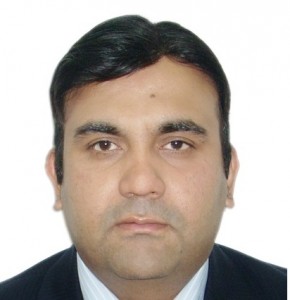 If Modi realizes his vision, it will not just open up countless doors for a healthy India-U.S. co operation on numerous issues, but it will also bring New Delhi and Washington on a similar platform where in they will share similar objectives involving countering terrorism, promoting open and free seaway trade through the Indo-Pacific region among other issues.
If Modi realizes his vision, it will not just open up countless doors for a healthy India-U.S. co operation on numerous issues, but it will also bring New Delhi and Washington on a similar platform where in they will share similar objectives involving countering terrorism, promoting open and free seaway trade through the Indo-Pacific region among other issues.It was during his recent visit to India that U.S. Secretary of State John Kerry made it explicitly clear that when Modi visits US in September, he is all set to receive a thunderous reception. The joint statement which was issued after the fifth round of the strategic dialogue talks talk about an expansive and elaborate agenda which will take the relationship between the two countries to another level.
Some of the agendas which were discussed include agendas like before the year ends, they are committed to hold a meeting of the Counter-Terrorism Joint Working Group, ministerial-level Homeland Security and Trade Policy Forum dialogues, the CEO’s Forum, as well as the next round of the High Technology Cooperation Group. The U.S. also will participate for the first time in India’s Annual Technology Summit in November. This as is evident is a sign of changing times but then practically speaking, it is all about keeping pace with times and not letting go the momentum for transformations to take place.
Then again the WTO incident sticks out like a sore thumb. Although India’s position would have been disappointing given the situation, the step it took eventually was extremely disturbing coming from the government which has been going to great lengths to project the country as a dynamic economy encouraging global trade and investment.
Moving forward, the BJP government will need to show it is genuinely committed to bolstering the private sector and demonstrating leadership in the global trade arena. Modi’s track record of making Gujarat one of India’s most investor friendly states gives confidence that he will prioritize reviving the economy and encouraging private-sector growth.
Although changes are not going to happen overnight, the signs are there. The commitment to a pro-business agenda sure sounds promising.
From the Defense Perspective
 One area where the relationship is all set to turn a new leaf is the defense sector. As the BJP’s election manifesto spoke about the need to modernize India’s armed forces and to galvanize the defense purchases and promise has been kept as the government in one progressive turnaround, raised the foreign direct investment cap in the defense sector to 49 percent. And not just that, the defense spending in the budget has been raised to 12%. This will definitely motivate U.S. to invest in India and will in turn help them develop India’s defense industrial base.
One area where the relationship is all set to turn a new leaf is the defense sector. As the BJP’s election manifesto spoke about the need to modernize India’s armed forces and to galvanize the defense purchases and promise has been kept as the government in one progressive turnaround, raised the foreign direct investment cap in the defense sector to 49 percent. And not just that, the defense spending in the budget has been raised to 12%. This will definitely motivate U.S. to invest in India and will in turn help them develop India’s defense industrial base.
U.S. Defense Secretary Chuck Hagel during his recent visit to India spoke about dozens of proposals which India can definitely think about with regard to co-production of defense items and transfer of technology. Co-producing the Javelin anti-tank missile is one of the most important proposals which India can give a serious thought to. Over the last decade, U.S. has cumulatively signed nearly $13 billion in defense contracts and that includes top line deals of military transport aircraft and helicopters. But then the setbacks have neutralized the effect somehow. When India decided to down select two U.S. companies from a bidding process to fill its requirement for 126 fighter aircrafts, it was quite a difficult pill to swallow for U.S. On the flipside, U.S. has been trying for years to convince India to sign U.S. defense technology agreements so that they can export the best of their technology. But India’s reluctance is not doing any favors to the whole process.
Clarity over Nuclear Deal
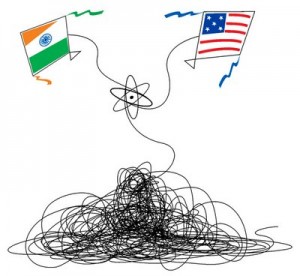 Over the past half decade, the nuclear issue has been a cause of concern between India and U.S. When the BJP was the opposition party, it vehemently opposed the nuclear deal and pushed for liability legislation that complicated matters further. Now with the BJP in power, the U.S. must kick start the attempt to resolve the issue if it has to invest in India’s civil nuclear sector. U.S. must also insist on India’s membership in the major multilateral nonproliferation groupings, such as the Nuclear Suppliers Group and the Missile Technology Control Regime. The BJP’s coming into power is all set to re energize U.S. India ties and progress on the areas of defense, security, trade and counter terrorism co operation.
Over the past half decade, the nuclear issue has been a cause of concern between India and U.S. When the BJP was the opposition party, it vehemently opposed the nuclear deal and pushed for liability legislation that complicated matters further. Now with the BJP in power, the U.S. must kick start the attempt to resolve the issue if it has to invest in India’s civil nuclear sector. U.S. must also insist on India’s membership in the major multilateral nonproliferation groupings, such as the Nuclear Suppliers Group and the Missile Technology Control Regime. The BJP’s coming into power is all set to re energize U.S. India ties and progress on the areas of defense, security, trade and counter terrorism co operation.
The U.S. India relationship is on the brink of a fabulous new turn and progress is a foregone conclusion. It is just a matter of keeping up with the changing times. That is because more than the quantity, it is the quality of the Indo-U.S. dialogues which will make the ultimate difference and both the countries should look forward to cementing their relationship in a concrete manner while managing the day to day issues which are bound to come up at times.
]]>India is well on its way to a makeover, on the cusp of transformation and leading the charge is none other than the Prime Minister himself, Narendra Modi. In his recent Independence Day speech, Modi announced his vision for a future driven by innovation and aimed at improving the lives of all Indians at large. To achieve his dream of a “Digital India”, his government plans to build the required infrastructure which will ensure that all Indians have access to essential public services and information. A dream which few have dreamt before, leave alone fulfillment.
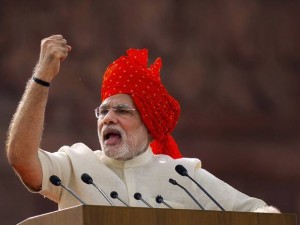 Then again it is something to look forward to and surely an inspiring signal to his constituents and international partners. After all, innovation is currently the buzzword and extremely necessary for the growth of any nation in the 21st century and for a country as diverse as India, it is something which is long overdue. By embracing the humungous potential that technology has to offer, the people of India can connect and unite like never before. From improving the overall access to education and exploring fresh perspectives on the same to increasing the country’s electronic manufacturing capabilities, so that even those living in the far remote expanses of rural India could benefit.
Then again it is something to look forward to and surely an inspiring signal to his constituents and international partners. After all, innovation is currently the buzzword and extremely necessary for the growth of any nation in the 21st century and for a country as diverse as India, it is something which is long overdue. By embracing the humungous potential that technology has to offer, the people of India can connect and unite like never before. From improving the overall access to education and exploring fresh perspectives on the same to increasing the country’s electronic manufacturing capabilities, so that even those living in the far remote expanses of rural India could benefit.
The Obama Administration recently praised Modi’s approach and quickly highlighted the opportunities for collaboration. In comments at the New York Foreign Press Center, U.S. Assistant Secretary of State for South and Central Asia Nisha Biswal said, “We have a pretty ambitious roadmap and workload over the next six weeks and we look forward to a very substantive and consequential visit for Prime Minister (Modi) and look forward to being able to really put a great deal of meat on the bones in terms of this very important relationship that the President has characterized as a defining partnership for the US in the 21st century. This is a relationship that carries a great deal of importance and meaning to the US and is at a critical moment of opportunity and we want to make sure we work very closely with our counterparts in India in realizing that opportunity”.
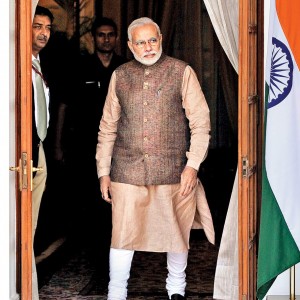 Recently, India and the US came together to discuss issues in the Strategic Dialogue Meet that was chaired by US Secretary of State John Kerry and External Affairs Minister Sushma Swaraj in New Delhi on August 1.The dialogue focused primarily on strengthening cooperation in economic opportunity, energy security, homeland security, education, space and vocational training. ”These are all areas where we are looking to see some concrete announcements. I don’t have that to give to you right now but that is what the homework assignment has been for the two sides to be working on over the next six weeks,” Biswal said referring to the Strategic Dialogue Meet.
Recently, India and the US came together to discuss issues in the Strategic Dialogue Meet that was chaired by US Secretary of State John Kerry and External Affairs Minister Sushma Swaraj in New Delhi on August 1.The dialogue focused primarily on strengthening cooperation in economic opportunity, energy security, homeland security, education, space and vocational training. ”These are all areas where we are looking to see some concrete announcements. I don’t have that to give to you right now but that is what the homework assignment has been for the two sides to be working on over the next six weeks,” Biswal said referring to the Strategic Dialogue Meet.
Coming back to Modi’s dream of a Digital India, it sure is a grand vision which would take some doing to even embark on its first baby steps and going by the last few months, there’s been more talk than action. As a country, India maintains discriminatory industrial policies that are stopping U.S. exports of the very information and communication technology products that Modi will need to realize his Digital India dream. Widespread copyright piracy and negligent protection of intellectual property rights in India are discouraging innovation and investment and instead are resulting in more brain drain than ever.
While most of the developing countries are opening up their markets and are in the process of introducing the kinds of legal and economic reforms which are necessary to build and sustain a modern digital economy, India is falling further behind rather than keeping pace with them. In the last one year itself, India has slipped ten places in the global innovation index and now ranks a disappointing 76th in the world. According to the 2014 World Economic Forum’s Global Enabling Trade Report, India’s trading regime ranks 96th out of 132 countries in terms of enabling trade. Not the ideal figures when we talk of a nation thinking digital.
These are early days for the Modi government, and manufacturers remain optimistic that positive progress can be achieved and a fruitful bilateral commercial relationship would be an ideal beginning. If India’s new government is serious about taking the actions necessary to achieve their vision, then America is more than ready to work with them.
Nisha Biswal’s Quote Source: Economic Times
]]>Under this new focus, the foreign ministry will actively facilitate attempts by states to seek investments in infrastructure from abroad and at the same time encourage them to engage with relevant countries for developing business and cultural links and thus boost the state economy as a whole.
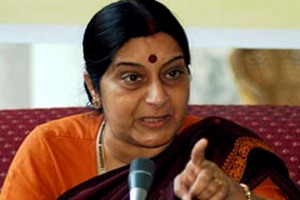 This new initiative was unveiled in Singapore by Sushma Swaraj, who is currently the Foreign Minister and she clearly listed state focus as one of the ways to promote ties with lot of countries including Singapore. To continue the same initiative, West Bengal Chief Minister Mamata Banerjee, Rajasthan Chief Minister Vasundhara Raje, Telengana Chief Minister K Chandrashekar Rao and their Andhra Pradesh counterpart Chandrababu Naidu later this month will also visit Singapore to throw more emphasis and spotlight on this initiative.
This new initiative was unveiled in Singapore by Sushma Swaraj, who is currently the Foreign Minister and she clearly listed state focus as one of the ways to promote ties with lot of countries including Singapore. To continue the same initiative, West Bengal Chief Minister Mamata Banerjee, Rajasthan Chief Minister Vasundhara Raje, Telengana Chief Minister K Chandrashekar Rao and their Andhra Pradesh counterpart Chandrababu Naidu later this month will also visit Singapore to throw more emphasis and spotlight on this initiative.It has never been a secret that Modi has always wanted to overhaul the Ministry of External Affairs (MEA) even before he became PM and this may very well be his first step towards achieving that goal by asking the ministry to work in tandem with states over economic issues. When he had addressed a gathering of traders in Mumbai a few months before becoming the Prime Minister, he had said that the main purpose of overseas mission was to facilitate trade and business and not restricted to sending mundane dispatches about host countries.
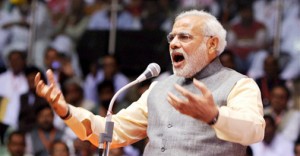 The state focus initiative, which is now a very important part of foreign policy, is a pointer to states participating actively in economic diplomacy. In Singapore, Swaraj shared a vision to build India-Singapore ties on what she described as a 5 S plank – scale up trade and investments, speed up connectivity, smart cities with focus on urban development and water management, skill development and state focus to promote engagement with Indian states.
The state focus initiative, which is now a very important part of foreign policy, is a pointer to states participating actively in economic diplomacy. In Singapore, Swaraj shared a vision to build India-Singapore ties on what she described as a 5 S plank – scale up trade and investments, speed up connectivity, smart cities with focus on urban development and water management, skill development and state focus to promote engagement with Indian states.“We look forward to Singapore companies to speed up connectivity and infrastructure projects in India, particularly, along the Delhi-Mumbai Industrial Corridor (DMIC), the Chennai-Bangalore Industrial Corridor and the North-East,” said Swaraj, adding that Singapore could develop a virtual city or a “”little Singapore” somewhere along the corridor.
Modi’s exemplary vision for 100 smart cities, as outlined in the annual budget, is also emerging as a major thrust area for the foreign ministry which is seeking expertise from abroad for implementing the humungous proposal.
The fact remains that not just Singapore, but a lot of other countries would be ideal role models for India. In fact, the advantage of having so many states in India and each state being unique in its topography and offerings can definitely give this initiative the required fillip. Larger countries like US, China and UK would be ideal countries to look up to just like India is considering Singapore. After all, when the vision is path breaking, then with the right implementation, the results sure should be nothing short of phenomenal. A new possibility awaits and newer collaborations are all set to spell a boom in the India US trade relations. ]]>
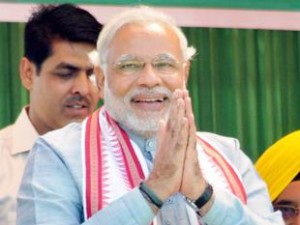 As a unified voice of Indian Americans, USINPAC strongly opposes this petition and encourages every Indian American to write to their lawmakers to ensure this anti-India petition is pulled down from the White-House website. This is the time to stay united and the best opportunity to discredit the motives and agenda of organizations engaging in perpetrating such lies which have no basis.
As a unified voice of Indian Americans, USINPAC strongly opposes this petition and encourages every Indian American to write to their lawmakers to ensure this anti-India petition is pulled down from the White-House website. This is the time to stay united and the best opportunity to discredit the motives and agenda of organizations engaging in perpetrating such lies which have no basis.USINPAC successfully led a grassroots outreach efforts in Washington DC to stop the Resolution HR 417 from going to the House Floor for a vote in Nov. 2013. HR417 was a resolution intended to influence India’s upcoming elections by focusing on the 2002 Gujarat riots. USINPAC has been constantly working on the Hill to promote US-India strategic relationship.
We again urge you to pick up your phone, call your lawmakers and sign the following petition: http://wh.gov/luV42.
For more details, please ask us: info@usinpac.com ]]>
As Indian Prime Minister Narendra Modi prepares for his first speech from Delhi’s Red Fort on Independence Day, history is waiting to be rewritten. In fact Modi has been preparing for this moment for some time now.
If we roll the clock back a year from now, it was on August 14, 2013 when Modi had thrown down the gauntlet by challenging that his August 15 speech in Gujarat, as Chief Minister, would draw as much attention as that of then Prime Minister Manmohan Singh’s from the Red Fort.
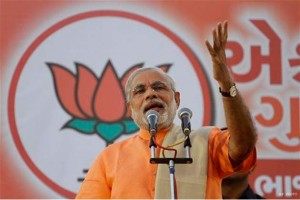 His speech last year on Independence Day had begun from a college in Bhuj and had started about half an hour after Manmohan Singh’s speech had finished. Modi had then torn into Dr. Singh’s speech branding it uninspiring and disappointing. The bigwigs at BJP had then proclaimed that Mr. Modi’s next Independence Day speech would be at Delhi’s Red Fort. In fact so fond a wish was it that in election-bound Chhattisgarh in September last year, the BJP erected a replica of the Red Fort as a stage for a Modi rally.
His speech last year on Independence Day had begun from a college in Bhuj and had started about half an hour after Manmohan Singh’s speech had finished. Modi had then torn into Dr. Singh’s speech branding it uninspiring and disappointing. The bigwigs at BJP had then proclaimed that Mr. Modi’s next Independence Day speech would be at Delhi’s Red Fort. In fact so fond a wish was it that in election-bound Chhattisgarh in September last year, the BJP erected a replica of the Red Fort as a stage for a Modi rally.
Here we are a year later, and the stage is set for Prime Minister Narendra Modi to deliver a speech which many expect would be inspiring and thought provoking in equal amounts.
As the D day draws closer, it is believed that the speech will highlight three major initiatives that are in the pipeline. The spotlight shall remain on big ticket reforms but the three initiatives-a clear plan for the Clean Ganga project, skill development for the nation’s youth, and real steps to ensure financial inclusion-will be the main ingredients of Modi’s first address to the nation.
In fact all three of these major initiatives have been the fulcrum of Modi’s campaign and have been the party’s manifesto in the run-up to the Lok Sabha elections this year. In the pipeline are plans to create separate nodal offices for skill development and Clean Ganga project. While the skill development for youth is proposed to be handled by about 20 ministries, different programmes to clean Ganga shall fall under at least three ministries.
 True to Modi’s focus on skill development, the government has completely dedicated one of the six areas on the recently launched web portal MyGov to it. The purpose is to develop bold ideas, concrete policies, initiatives and interventions to help develop employable skills on a mass scale to meet the needs of the industry and help youth enter the job market.
True to Modi’s focus on skill development, the government has completely dedicated one of the six areas on the recently launched web portal MyGov to it. The purpose is to develop bold ideas, concrete policies, initiatives and interventions to help develop employable skills on a mass scale to meet the needs of the industry and help youth enter the job market.
So as the countdown begins for August 15, the nation shall wait with bated breath for Modi to unleash a speech which will be charismatic and impactful in equal amounts. After all, we already know he is a man of his words.
The relationship between India and the United States is on the threshold of a new resurgence. Newer opportunities are knocking at the doorsteps of both the countries and with Narendra Modi all set to visit US next month, there could not be a more opportune time to take this relationship to the next level. The recent visit of US Secretary of State John Kerry and Secretary of Commerce Penny Pritzker to India could not have come at a more crucial juncture. Their meetings with various dignitaries, including Indian Prime Minister Narendra Modi, reinforced the need to strengthen the relationship between the two countries, in the wake of India walking out of the WTO.
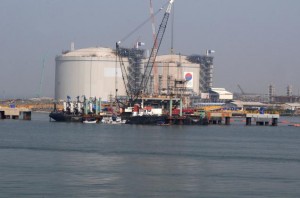 The issue of Energy security is critical for both the US and India. As a country US is producing more fuel than it can ever use, but the refusal to export the same to India is hurting the trade relations between the two countries. For US, it would ensure that thousands of jobs are created and it would boost the economy several notches higher and for India it would mean an uninterrupted supply of clean energy. Why this win-win situation for both US and India is still pending and has not been implemented is beyond comprehension.
The issue of Energy security is critical for both the US and India. As a country US is producing more fuel than it can ever use, but the refusal to export the same to India is hurting the trade relations between the two countries. For US, it would ensure that thousands of jobs are created and it would boost the economy several notches higher and for India it would mean an uninterrupted supply of clean energy. Why this win-win situation for both US and India is still pending and has not been implemented is beyond comprehension.
Apart from that, defense development between the two countries is the need of the hour and both US and India must seize every opportunity to collaborate on defense and not let other factors restrict the growth between the two nations. The recent visit of Defense Secretary Chuck Hagel to India was a step in that direction.
Hagel has left India with few concrete agreements and he acknowledges the fact that the world’s oldest and the world’s largest democracy must be results oriented and do more to transform the defense co operation between both the nations from just buying and selling tradeoffs to the next level of co production and co development.
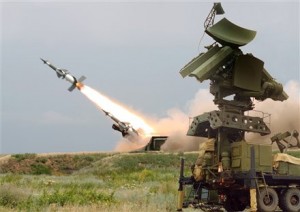 In the near future, The US is hoping to partner with India as it modernizes its military, but at the same time Indian leaders are more interested in co-development opportunities than in simply buying American-made weapons.
In the near future, The US is hoping to partner with India as it modernizes its military, but at the same time Indian leaders are more interested in co-development opportunities than in simply buying American-made weapons.
The new initiative brought to the forefront by Hagel includes more than a dozen proposals that would transfer technology and production expertise to India. It includes a plan for the US and India to co-produce and co-develop, the next upgrade of the Javelin anti-tank missile which would be cheaper, lighter and more capable.
The development initiative in other words is part of a larger picture which is America’s attempt to improve what has often been a shaky relationship with India, which can turn out to be one of their most prominent allies in Asia.
]]>Now the relationship between Prime Minister Modi and US has seen its degree of friction and controversies over the years. The prime reason for the equation to go kaput was the visa issue. Mr Modi as Chief Minister of Gujarat did not have the required permission to visit US for almost a decade. And the prime reason for this little known law to stop him from coming was only ever used against one politician in the world and that unfortunately was Narendra Modi.
But now that the relations have seen an upswing and as the Modi victory campaign promised ’Acche din aane wale hai’ , it’s time to understand how can this association be taken to levels which are fruitful to both the countries. US India Political Action Committee (USINPAC) along with some other representatives of the Indian American community have come up with a unique proposal which suggests that the BJP-led Government should issue infrastructure bonds for the NRI community to tap the goodwill of the Indian diasporas.
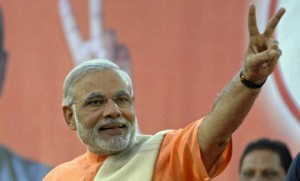 The announcement of the bond can be made by Prime Minister Narendra Modi on his visit to US. Sanjay Puri, Chairman, (USINPAC), said “USINPAC has had extensive discussions with top financial institutions in the US and members of the Indian diasporas in several countries on the market viability of the proposed bonds and have received an overwhelmingly positive response on the same. We have suggested that the infrastructure bonds can also be used to fund the ambitious Ganga conservation mission”.
The announcement of the bond can be made by Prime Minister Narendra Modi on his visit to US. Sanjay Puri, Chairman, (USINPAC), said “USINPAC has had extensive discussions with top financial institutions in the US and members of the Indian diasporas in several countries on the market viability of the proposed bonds and have received an overwhelmingly positive response on the same. We have suggested that the infrastructure bonds can also be used to fund the ambitious Ganga conservation mission”.The USINPAC on its part has suggested naming the bond `Vibrant India Bonds’ in order to leverage the brand awareness of `Vibrant India’. This goes in tandem with the ‘Vibrant Gujarat’ campaign with Modi had launched as the Chief Minister of the State and a `Vibrant Gujarat Global Investment Summit’ that takes place every two years.
Coming back to the event of Modi addressing a joint session of Congress, USINPAC is working with members of US Congress to build momentum for an address by Modi. Over 40 Congressmen and 20 Senators have already informed the US Speaker of their wish to hear an address by him.
USINPAC is additionally working towards organizing a luncheon meeting with US Senators for Modi and a meeting with top US CEOs. As Sanjay Puri says’ “It is only through such meetings that the US approach to tricky issues such as IPR, visa for professionals and supply of natural gas to India can be changed”.
As a matter of fact, Vibrant India bonds can turn out to be the kind of idea for Modi’s visit, like the US-India nuclear deal was for former Prime Minister Manmohan Singh. India’s financial requirement which stands at $ 1.5 trillion can get a really big boost in terms of infrastructural needs and it is this endeavor which should do the trick.
The wait then begins… ]]>
The new government which is just two months into its term is changing the economic future of the country, and bringing about significant changes in the Geopolitical and strategic scenario.
There is optimism in the stock market, whose turnaround in the last 3-4 months has been nothing less than spectacular, coinciding as it has with the rising trend in the American markets. Foreign Institutional Investors have invested heavily in both debt & equity. The Current Account Deficit ( CAD) is at a historic low level and general upward sentiment has stabilised the Rupee to Rs 60 to a dollar against Rs 68 last year. The positive sentiment is also reflected in the latest IIP ( index of industrial production) which grew at a 19 month high of 4.7% in May.
While not abandoning the earlier government’s social sector schemes, the budget has a multi-pronged approach to encourage manufacturing, real estate, infrastructure, tourism and to pursue disinvestment with a new zeal. A lot of emphasis is being laid on FDI and Public Private Partnership (PPP) for development of infrastructure, specially the railways.
The budget has had its hits and misses:
1. The optimist target of fiscal deficit as proposed by the earlier UPA is being retained at 4.1% with an aim to reduce it to 3% by the year 2017. That seems to be a tall order.
2. It has reiterated the government’s commitment to come out with a clear road map for implementation of Goods and Services Tax ( GST) by the end of the current year. Most economists are of the opinion that as and when implemented it would be a game changer.
3. The budget has increased the Foreign Direct Investment (FDI) limit from 26% to 49% in the areas of Defence manufacturing and Insurance sectors. India is one of the largest importers of arms. In fact, for a couple of years it has been the largest. The indigenisation of defence manufacturing has been a long-standing goal of policymakers, mainly because it is believed that in its absence India cannot hope to become a great power. Another reason for discouraging the arms imports is that it leads to substantial outflow of foreign exchange thereby adding to India’s generally high CAD. It is widely believed that increased FDI limit in Insurance sector would eventually lead to money flowing into cash starved Infrastructure and real estate sectors.
4. The budget also proposes to set up an infrastructure trust to help provide long term finance for the sector.
5. The Real Estate Investment Trusts (REITs) should be operational in eight months to a year. This measure is expected to give a fillip to the sector, which is more or less unorganised at present.Though a pass through in terms of taxation has been allowed on rental income, there are still a number of clarifications required on other taxes such as estate duty, Service tax etc.
6. The budget proposes 100 smart cities. To encourage this, the built-up area and capital conditions for FDI have been reduced from 50,000 square meters to 20,000 square meters and from $10 million to $5 million respectively with a three year post lock in.
7. The disinvestment in the PSU banks is proposed by the Finance Minister. This is expected to be achieved through public offering with a twin objective, to the benefit of retail investors and to meet the capitalization requirement as per BASEL III norms.
8. To boost tourism, facility of Electronic Travel Authorization ( e-Visa) would be introduced in a phased manner at nine airports in India within the next six months. Some tax concessions have also been given to tour operators.
9. There has been no clarification on the General Anti- Avoidance Rules ( GAAR) which kick in from 1 April 2015. This acted as a temporary dampener for the stock market. These are provisions designed to check tax evasion. The government should have come out with unambiguous and transparent provisions in this regard in order to assure the markets.
10. The governments stand on retrospective taxation leaves a lot to be desired. When BJP was in opposition they described it as Tax Terrorism. This could be a big stumbling block for new foreign investments into India.
11. Filing an appeal against a customs, excise or service tax order passed by a lower authority will now require one to deposit at least 7.5% of the amount demanded by the department with the amount rising to additional 10% for second stage appeal. These provisions are regressive, as in most cases the demands confirmed by lower authorities are set aside by higher authorities.
Whereas the budget makes a sincere attempt to revive the Indian economy, at the geopolitical level, the Modi government appears to be courting China. There have been four senior-level interactions with China. First Mr Wang, foreign Minister of China, visited India, followed by the Vice President of India and later the Chief of Army visiting China and now Mr Modi meeting Mr Xi Jinping at the BRICS meet in Brazil. The meet led to the announcement of the setting up of BRICS bank with an authorised capital of $ 100 billion and a paid up capital of $ 50 billion, equally subscribed by the members. The bank would operate on the principle of one country one vote. In addition, there would be a $100-billion Currency Reserve Arrangement (CRA). For CRA, China will contribute the largest amount at $41 billion, followed by India, Russia and Brazil with $18 billion each and South Africa with $5 billion. The stated aim is to have a positive precautionary effect, help countries forestall short-term liquidity pressures, promote BRICS cooperation as also strengthen the global financial safety net. The bank is to be headquartered at Shanghai with the first president to be an Indian with a six year term.
Rather than challenging the might of IMF & World Bank, the intention behind the establishment of the BRICS bank seems to be of encouraging the emerging economies to set up parallel institutions to supplement the Bretton Woods institutions established under the leadership of Americans and other developed countries. India has generally had a favourable experience of borrowing from these institutions in the 1980s and 1990s, and therefore needs to positively engage with them. A BRICS bank may act as a catalyst to quicker reforms on voting and shareholding pattern of the IMF and World Bank – a long standing demand of emerging economies, including India.
]]>May 26, 2014
Dear Editor:
I take issue with Washington Post’s portrayal of India’s Prime Minister Mr. Narendra Modi and India (“Hindu nationalist Narendra Modi sworn in as India’s prime minister,” Post, May 26, 2014).
First, one correction. The backdrop of his oath-taking, Rashtrapati Bhavan, is not the Prime Minister’s residence, but that of the President of India (“Modi was sworn in on the forecourt of the historic residence, Rashtrapati Bhavan…”). A better description of that backdrop would be the Mall in front of our Capitol building.
Second, we need to address Mr. Modi as the Prime Minister of India, the head of State of the largest democracy in India, just like we address Mr. Obama as our President, and as the Head of State of the oldest and the most powerful democracy in the world. We do not label our President as a Muslim, but as a leader of all Americans. Similarly, Mr. Modi, a devout Hindu, is a leader of 1.1 billion people of India – one in every seven human on earth.
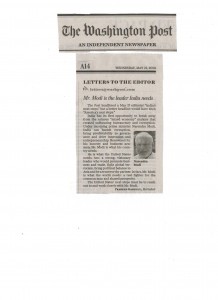 I believe that America is a nation of many religions, with Christians a majority. We are not a Christian nationalist nation. Similarly, India is a nation, and the birthplace, of many religions, with a Hindu majority. India is a Secular democracy like ours.
I believe that America is a nation of many religions, with Christians a majority. We are not a Christian nationalist nation. Similarly, India is a nation, and the birthplace, of many religions, with a Hindu majority. India is a Secular democracy like ours.
So, instead of (mis)labeling Mr. Modi and India, let’s celebrate our common bond in democracy and religious freedom, join hands to fight terrorism, and build on trade and investment.
Pradeep Ganguly
Herndon, Virginia
1314 Shallow Ford Road
Herndon, VA 20170
]]>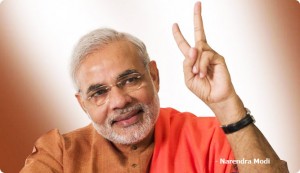 But it is not the future, but Modi’s past that presents a challenge for the United States. Hindu nationalist leader Narendra Modi was denied a U.S. visa in 2005 for alleged complicity in religious riots in 2002 that killed more than 1,000 Muslims. Exit polls display Bharatiya Janata Party and its allies with an unbeatable lead over the ruling Congress party and its allies after voting ended Monday thus reducing the final results to a mere formality. Once Modi takes the oath, the visa issue will no longer exist and U.S. will have to welcome Modi with open arms as there is too much at stake when it comes to the relationship between the two countries and such trivial issues will have to be done away with for the greater good.
But it is not the future, but Modi’s past that presents a challenge for the United States. Hindu nationalist leader Narendra Modi was denied a U.S. visa in 2005 for alleged complicity in religious riots in 2002 that killed more than 1,000 Muslims. Exit polls display Bharatiya Janata Party and its allies with an unbeatable lead over the ruling Congress party and its allies after voting ended Monday thus reducing the final results to a mere formality. Once Modi takes the oath, the visa issue will no longer exist and U.S. will have to welcome Modi with open arms as there is too much at stake when it comes to the relationship between the two countries and such trivial issues will have to be done away with for the greater good.It was in the month of February, when, for the first time in Modi’s decade-long tenure as the Chief Minister of Gujarat that the U.S. ambassador visited him. U.S. since then has gone on record and has always said that whoever is elected India’s next leader would be welcome to the U.S., leaving little doubt that if Modi becomes Prime Minister, he could visit Washington whenever he wishes to.
On Monday, U.S. President Barack Obama congratulated India on its national election and said the U.S. will work closely with India’s next government.”We look forward to working with the leaders chosen by the Indian people to advance this important partnership and to set an ambitious agenda,” State Department spokeswoman Jen Psaki said.
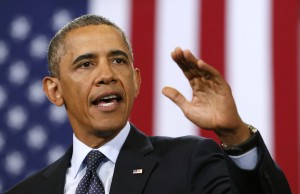 This very clearly means U.S. will accept whoever the citizens of India give their mandate to. But the U.S. will not be wrong if they think that Modi may hold a grudge against them for the visa denial, which may put a spanner when it comes to bilateral ties.
This very clearly means U.S. will accept whoever the citizens of India give their mandate to. But the U.S. will not be wrong if they think that Modi may hold a grudge against them for the visa denial, which may put a spanner when it comes to bilateral ties.But Modi has always said that the BJP will look forward to further strengthen the partnership between India and the U.S. and build on the foundations laid by Atal Behari Vajpayee (Former India Prime Minister and BJP Leader) years back, although not much has been mentioned about it during his campaign. On the other hand, the successor to Powell, who is resigning, could play an important role in trying to build a strong bond with the new Prime Minister.
“Obama has yet to nominate a replacement, but India will look for someone close to the White House”, said Sanjay Puri, chairman of the U.S.-India Political Action Committee, which has helped organize trips by senior BJP officials to the U.S. He’s also urging an early White House invitation for the next Indian leader. “This relationship needs some love right now,” Puri said. ]]>
